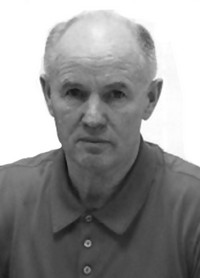MODEL OF ORGANIZATION OF PHYSICAL AND HEALTH ACTIVITY OF EMPLOYEES OF REMOTE INDUSTRIAL FACILITIES BY MEANS OF INFORMATION TECHNOLOGIES
Keywords:
recreational physical culture, rotational work, mobile applications.Abstract
Objective of the study was to develop a model for organizing physical culture and health-improving activities of workers at remote industrial facilities based on information technology and evaluate its effectiveness.
Methods and structure of the study. Scientific work was carried out on the basis of enterprises of the oil and gas complex located in the northern regions of the Siberian Federal District. In total, 500 people working on a rotational basis were examined - men aged 25 to 50 years. Questionnaire and testing methods were used (calculation of biological age, Rufier's test, Stange's test, Harvard step test).
Results and conclusions. The developed model includes three blocks - diagnostic, organizational and activity and control. For each block, the main content is formulated, the implementation technologies and the results that will be obtained in this block are determined. The result is a personalized training program. In the course of its implementation, an automated control over the state of students is carried out according to the criteria presented in the control block of the model.
References
Agadzhanyan N.A., Kolpakov V.V., Fateeva N.M. Vakhtovo-ekspeditsionnaya organizatsiya truda v usloviyakh Severa (Ekologo-fiziologicheskiye aspekty) [Shift-forwarding organization of labor in the conditions of the North (Ecological and physiological aspects)]. Moscow: Tyumen: TGMA publ., 1999.
Antipenkova I.V., Kireeva A.V. Korporativnyy sport v sisteme fizicheskogo vospitaniya trudosposobnogo naseleniya [Corporate sport in the system of physical education of the able-bodied population]. Teoriya i praktika fizicheskoy kultury. 2013. No. 8. p. 45.
Galkin Yu.P. Fizicheskaya kultura, rabotosposobnost i zdorovye trudyashchikhsya: problemy i perspektivy [Physical culture, working capacity and health of workers: problems and prospects]. Smolensk State Academy of Physical Culture, Sports and Tourism. Smolensk: [n.p.], 2008. 282 p.
Kireeva A.V., Antipenkova I.V. Sostoyaniye fizkulturno-ozdorovitelnoy raboty v organizatsii kak faktor, opredelyayushchiy interes sotrudnikov k zanyatiyam fizicheskoy kulturoy [The state of physical culture and health work in the organization as a factor determining the interest of employees in physical education]. Uchenye zapiski universiteta im. P.F. Lesgafta. 2019. No. 3 (169). pp. 138-140.
Petrov P.K. Tsifrovyye informatsionnyye tekhnologii kak novyy etap v razvitii fizkulturnogo obrazovaniya i sfery fizicheskoy kultury i sporta [Digital information technologies as a new stage in the development of physical education and the sphere of physical culture and sports]. Sovremennyye problemy nauki i obrazovaniya. 2020. No. 3.
Puciato D., Rozpara М., Borysiuk Z. Physical activity as a determinant of quality of life in working-age people in Wrocław, Poland. International Journal of Environmental Research and Public Health. 2018. Vol.15. p. 623.

Additional Files
Published
Versions
- 20-11-2022 (2)
- 20-11-2022 (1)

